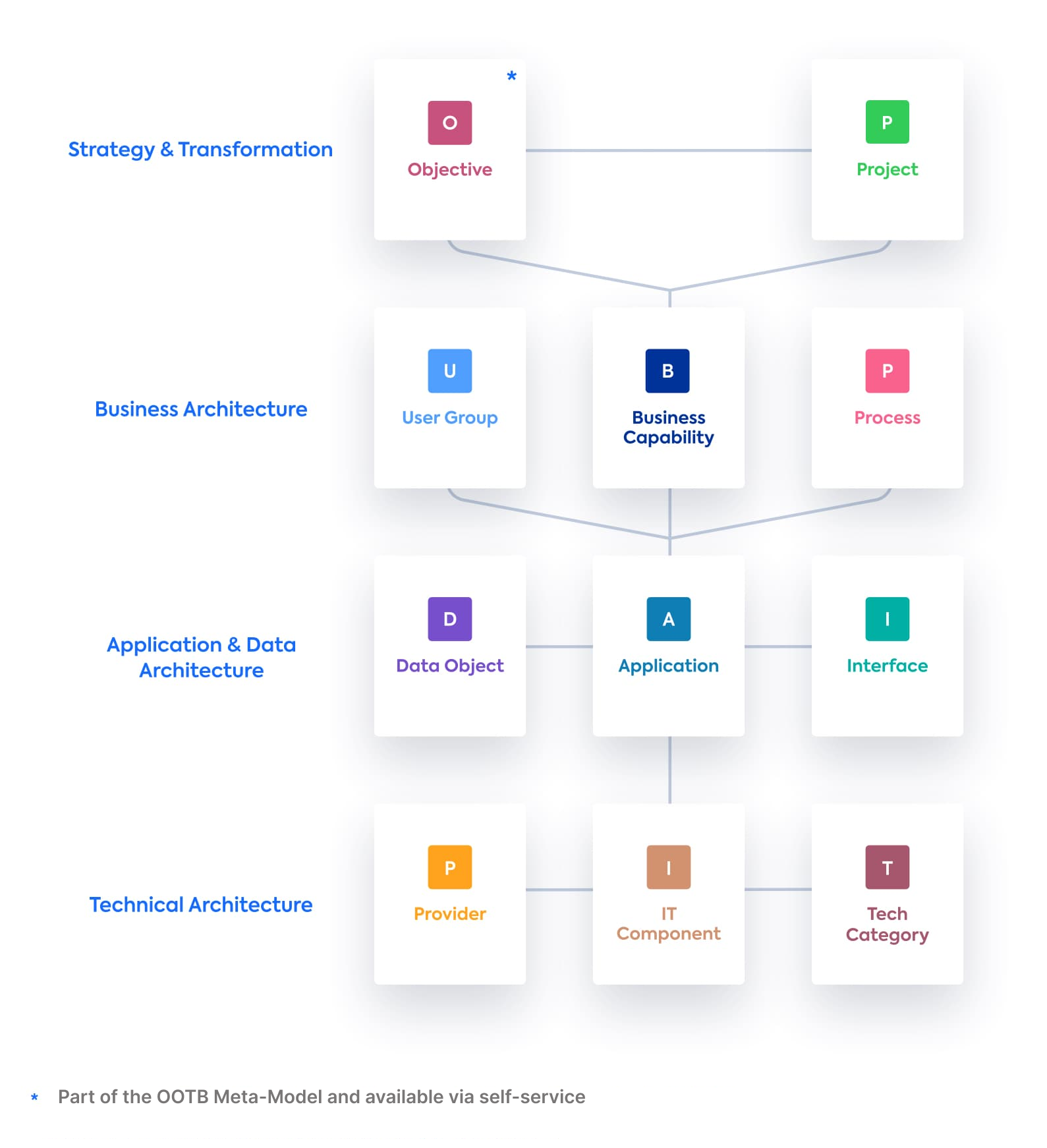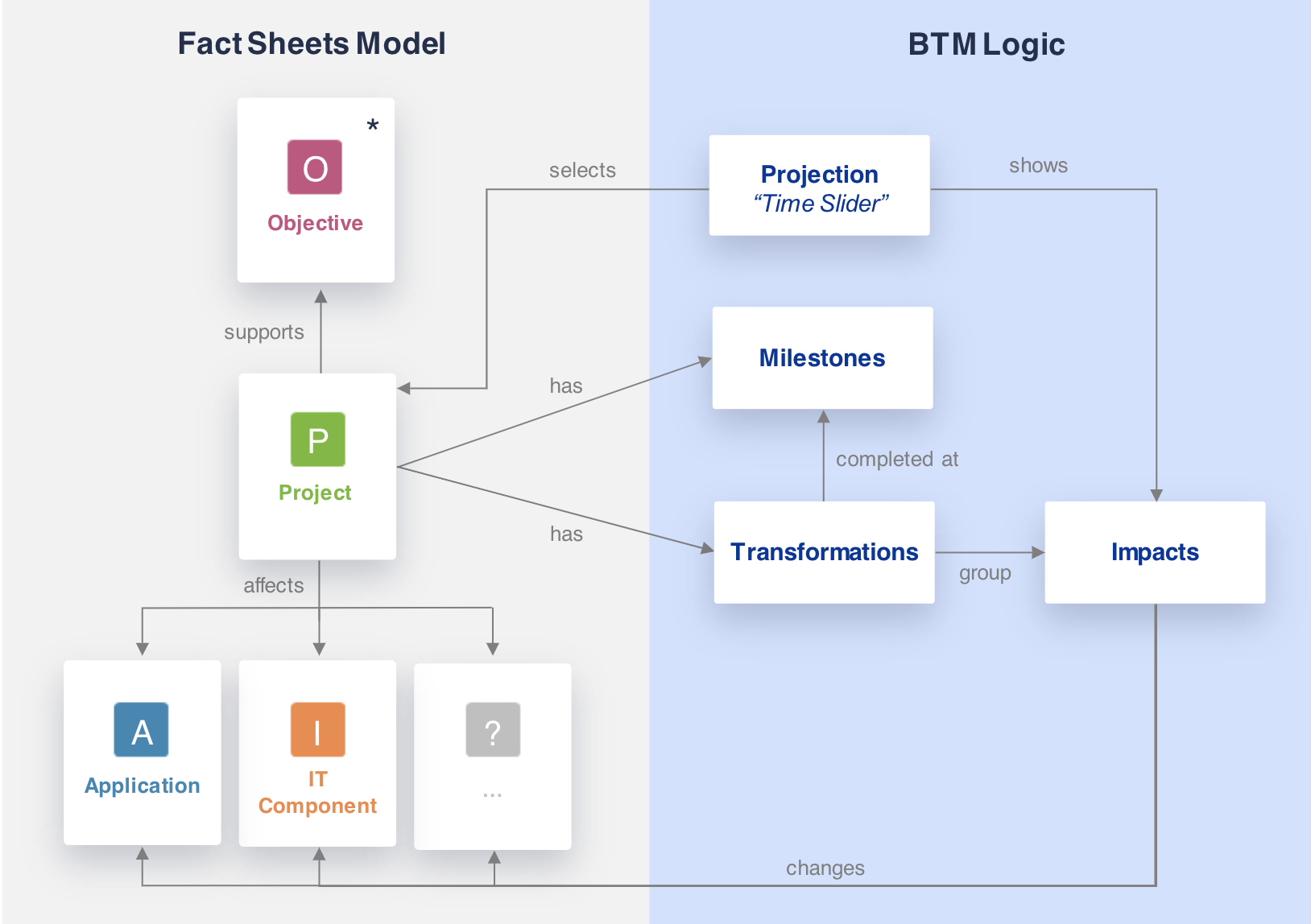Modeling: Objectives and Transformation Items (Projects)
Important Information
This page is a modeling guideline for Meta Model v3. For updated guidelines for Meta Model v4 see Meta Model v4.
Objective Fact Sheets allow for high-level definition and progress tracking of transformation initiatives and can be linked to Business Capabilities. Define Objectives to improve the business:
- Allows high-level progress tracking
- Identifies critical business capabilities
- Enables org. wide transparency
Transformation Item or Projects Fact Sheets, on the other hand, are used to plot detailed actions for achieving an Objective and as a way to model changes upon every other Fact Sheet in the wider LeanIX Meta-Model. Create detailed plans to achieve Objectives:
- Define a high-level transformation for those plans and project changes
- Out-of-the-box Transformation Items consist of three hierarchies: Plan, Building Block, Epic and Project

Objectives
Define your objectives and link them to your business capabilities for a holistic view.
Define Objectives to improve the business:
- Allows high-level progress tracking
- Identifies critical business capabilities
- Enables organization-wide transparency
Projects
Create Projects to achieve Objectives
- Captures the project portfolio
- Visualises affected elements of the IT landscape
- Defines transformations within the projects
- Specifies the detailed impacts on the IT landscape

Business Transformation Management (BTM) Logic
LeanIX offers a best practice structure to quickly kick-start transformation initiatives:
| Hierarchy | Description |
|---|---|
| Projection | Jump to any past or future state of your IT landscape and understand how your impacts change it |
| Milestones | Define target dates within or across projects at which transformations will be completed |
| Transformations | Define high-level changes on your landscape as groups of pre-defined & customized impacts |
| Impacts | Define detailed architectural changes a project has on your IT landscape to be executed upon completion |
Example: Cloud migration with BTM

To achieve this, the EA will work with respective Business Leaders to:
- Map affected Business Capabilities to the Objectives.
- Define plans to achieve Objective.
- Model impacts on affected Applications.
- Visualize plan based on multiple dimensions (e.g. time, cost, context).
- Decide, execute plan and track progress of Objective.
Updated 23 days ago
